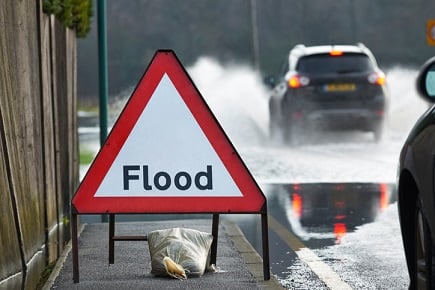

By some accounts, Fredericton is submerged. The Canadian Press reported on May 01 that floodwaters had washed out neighbourhoods along the Saint John River, turning some homes into islands. Communities in Maugerville, Jemseg, Sheffield, Grand Lake and Oak Point were also impacted as government officials said they were all seeing extensive flooding in those areas.
A country of rivers and lakes, Canadians are very clearly not safe from flooding events.
“The overall picture is that Canada is highly flood-exposed in many regions,” said Balz Grollimund, head treaty underwriting for Swiss Re in Canada and the English Caribbean. “All the big cities in Canada are located near rivers or near lakes. Inherently, a lot of the potentially insured values are flood-exposed.”
Despite the clear risks of being near water, Grollimund noted that it has been a trend in recent years to build high-value homes closer to the water, an unfortunate decision considering the losses incurred from water damage.
Luckily, the flood insurance market is developing in Canada, and the take-up rate among homeowners has reached about 30% across the country, with some differences across provinces.
“Until about 2013 when the Calgary flood hit in Alberta, there was really almost no flood insurance to be speaking of. Standard policies included sewer back-up, but all the overland flood was not included,” explained Grollimund. “Most insurance companies now offer some sort of flood coverage, [though] there’s a lot of diversity in how exactly they offer that, what limits they offer, what deductibles, what premiums for which types of flood exposures.”
There are tools in development that can help brokers protect a client from major losses from a flood or other water damage. For one, the federal government has devoted time and resources to creating a flood mapping project so that each area has a clear risk profile.
“This will become better going forward and, of course, that’s crucial to be able to have a really consistent basis for planning what actions you want to take in terms of becoming more flood resilient,” said Grollimund.
On other flood insurance fronts, there’s more work ahead.
“It’s also figuring out how big are certain flood events, how do they occur now, and how often will they occur going into the future when climate change progresses,” said the Swiss Re expert. “There’s still quite a bit to be done. There are propriety models that do model the probability of flood events. There’s really nothing on a more public basis and again, these models are quite important if you want to figure out what’s the return on investment and what mitigation measures are cost effective.”
A 2016 study by the Fraser Basin Council, which concluded that a flood in the next 85 years could lead to losses ranging from $20 billion to $30 billion, stands out to Grollimund as a good reason to develop better probability models. He also offers tips for how brokers can broach flood insurance with their customers and spread awareness about flood risk, before that type of mega-storm could wash out their livelihoods.
“Make it specific to homeowner, make tools available that show a homeowner, ‘your specific risk of being flooded in the next 10 or the next 50 years is such and such,’ so that it becomes immediate, it becomes personal. It’s not something that’s, ‘in theory, I should have flood coverage,’ but ‘I should buy flood coverage because my property has a certain risk.’”
